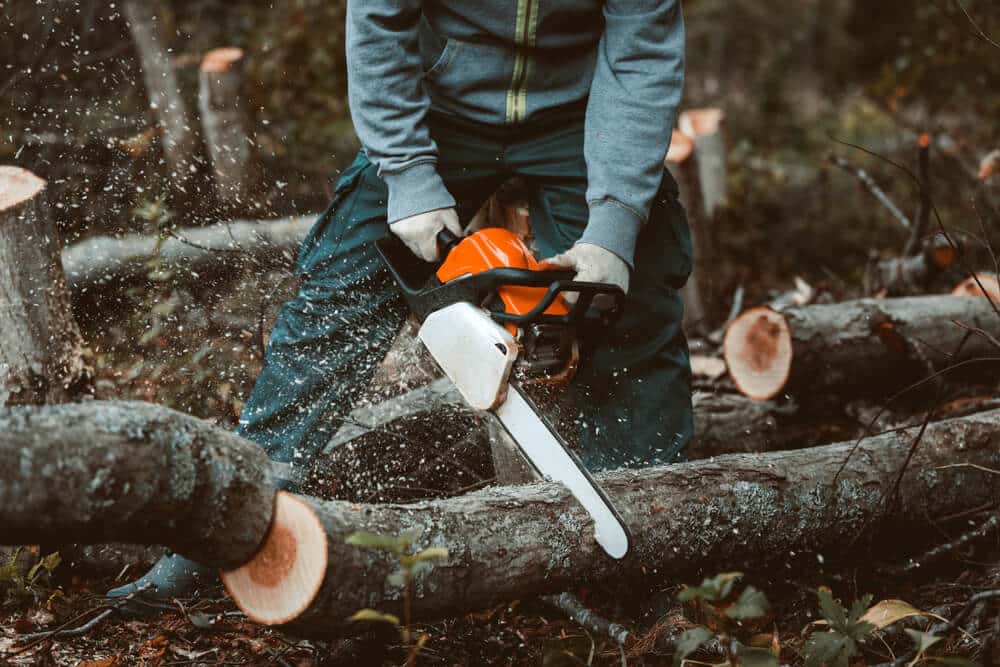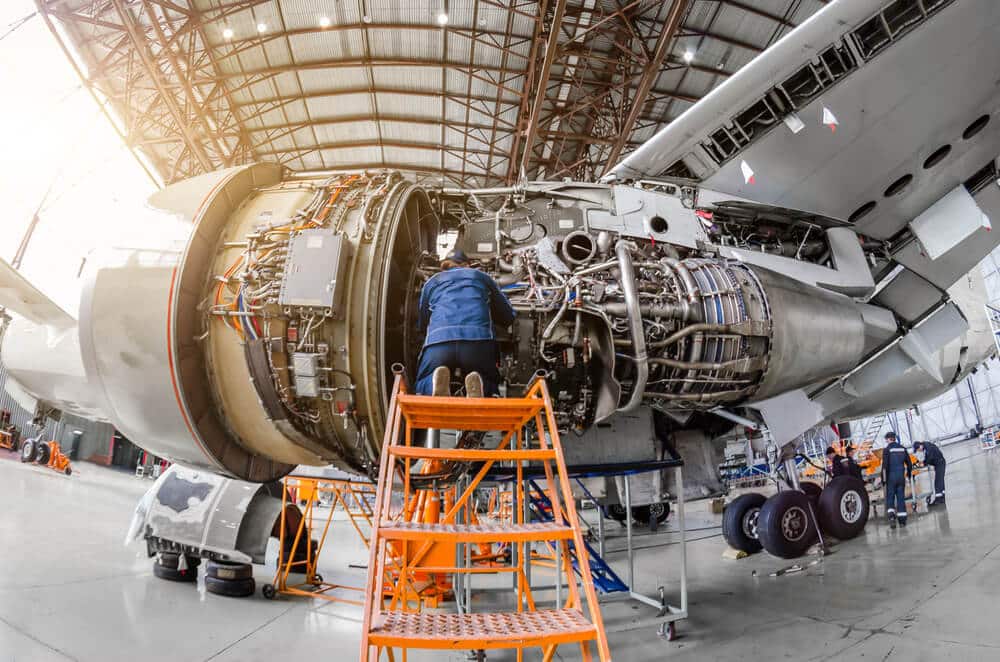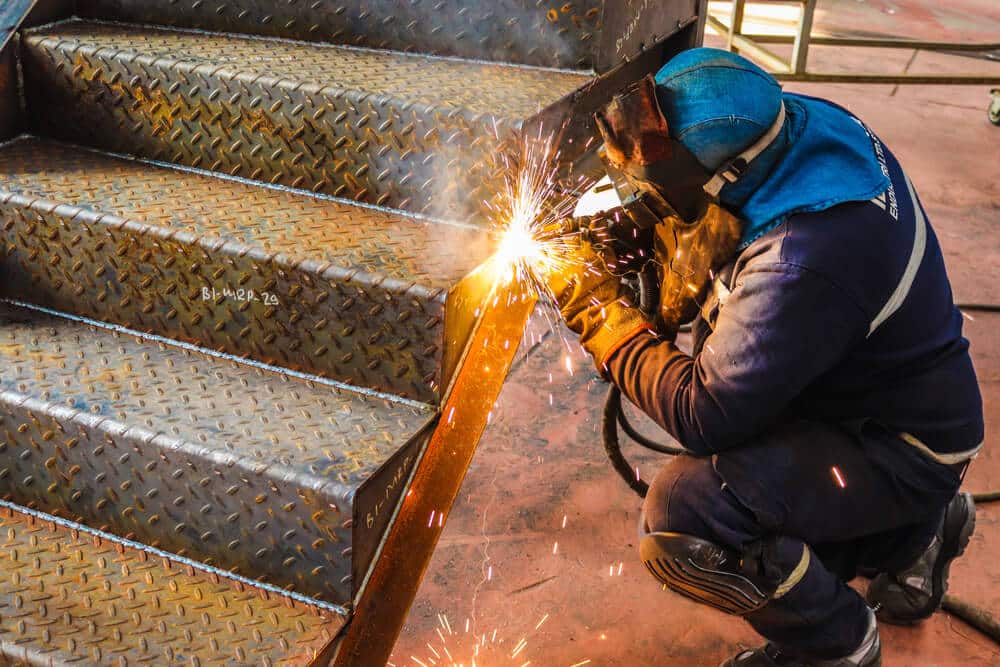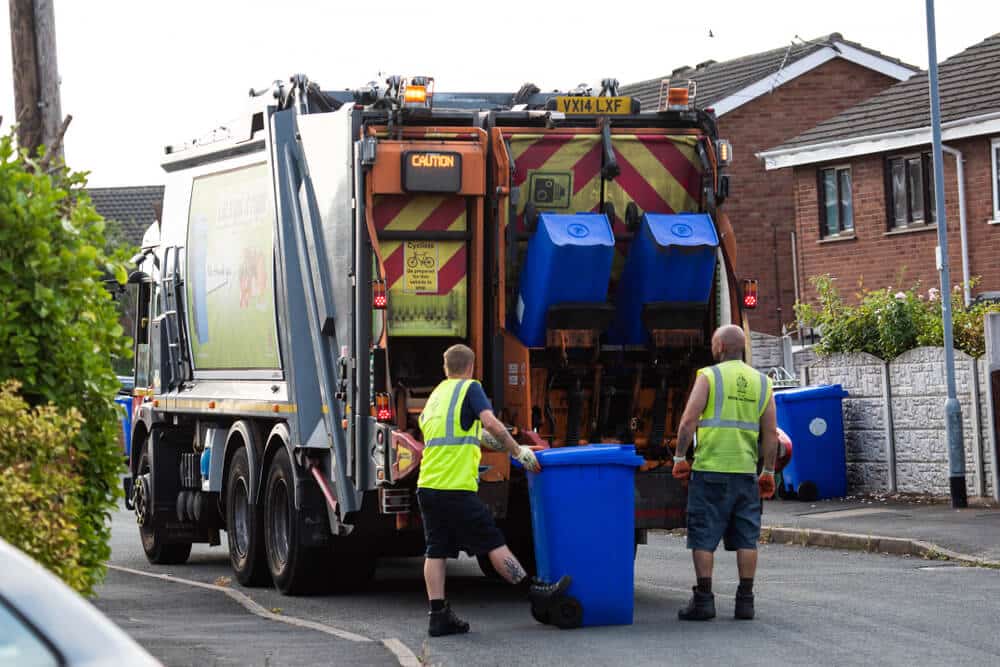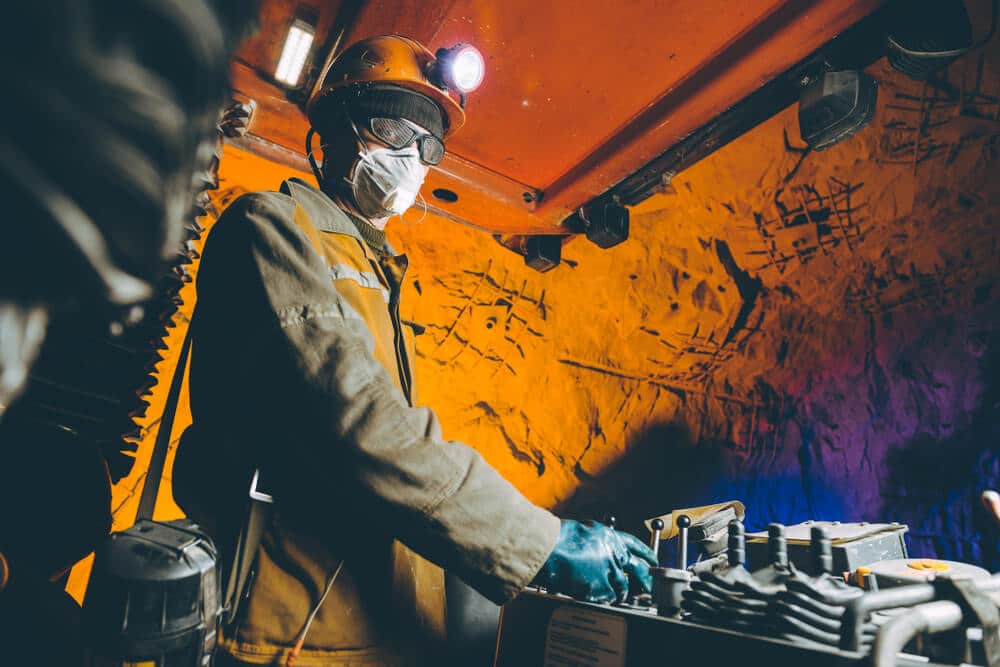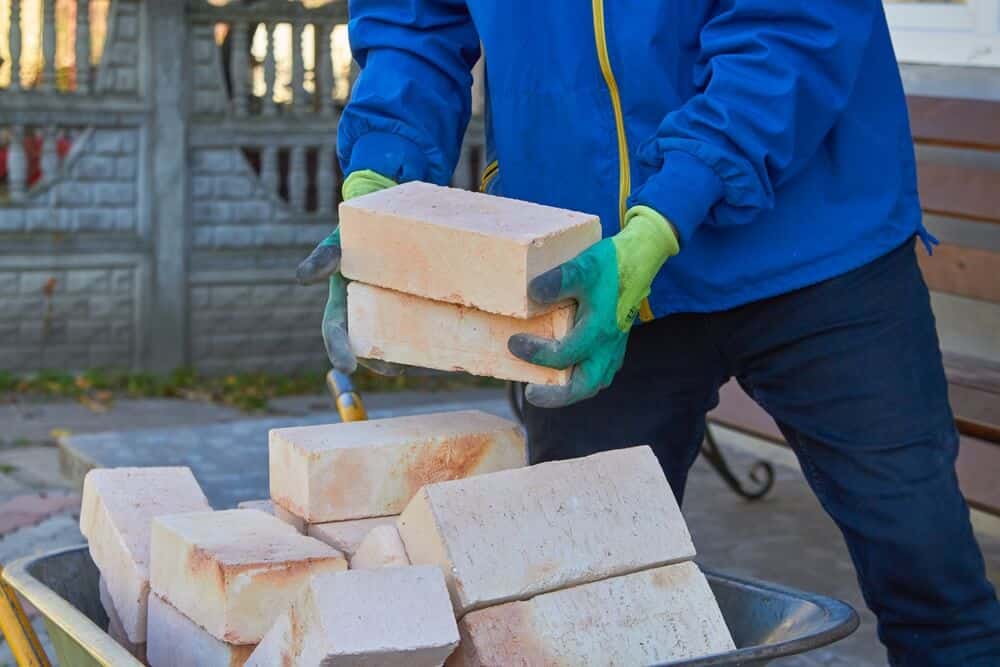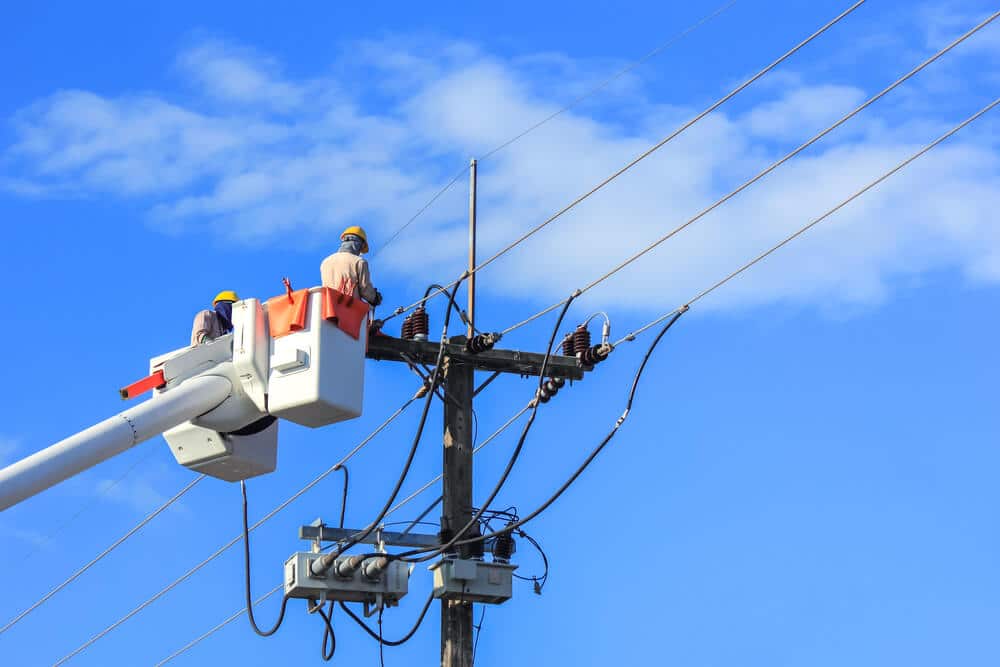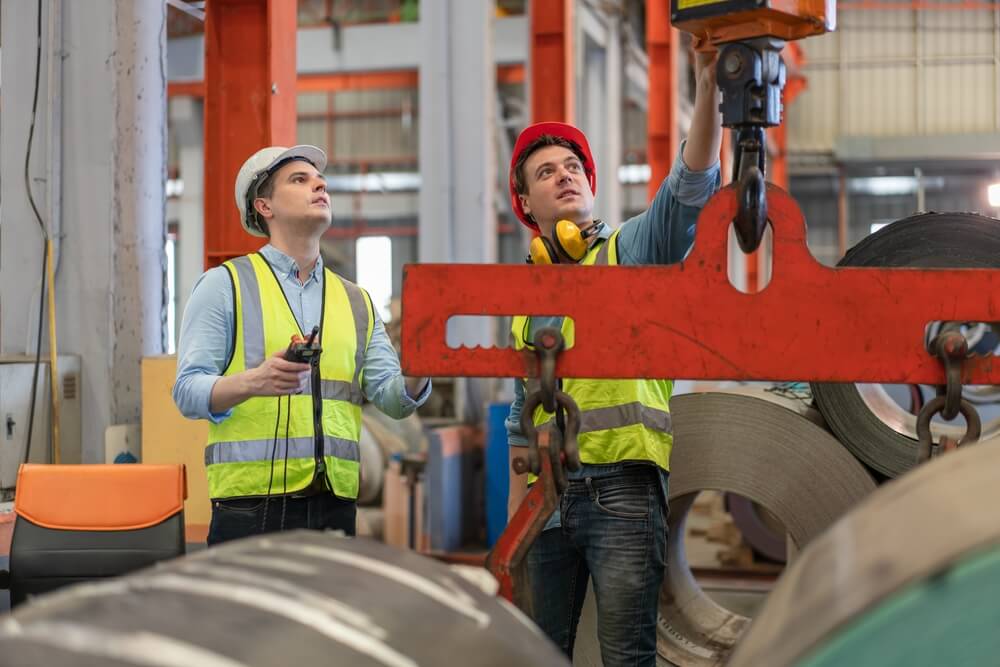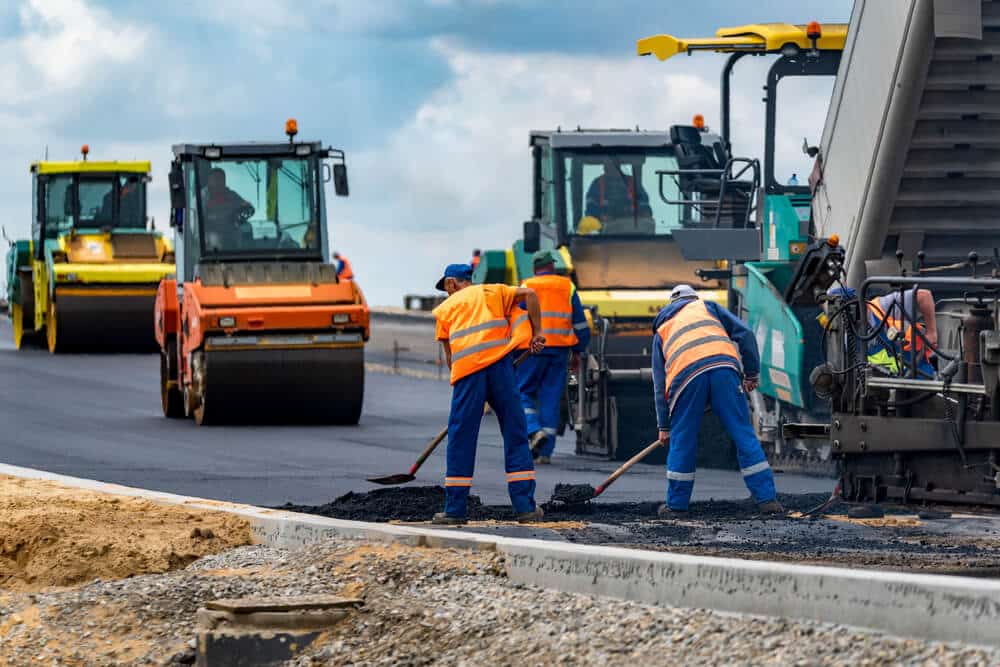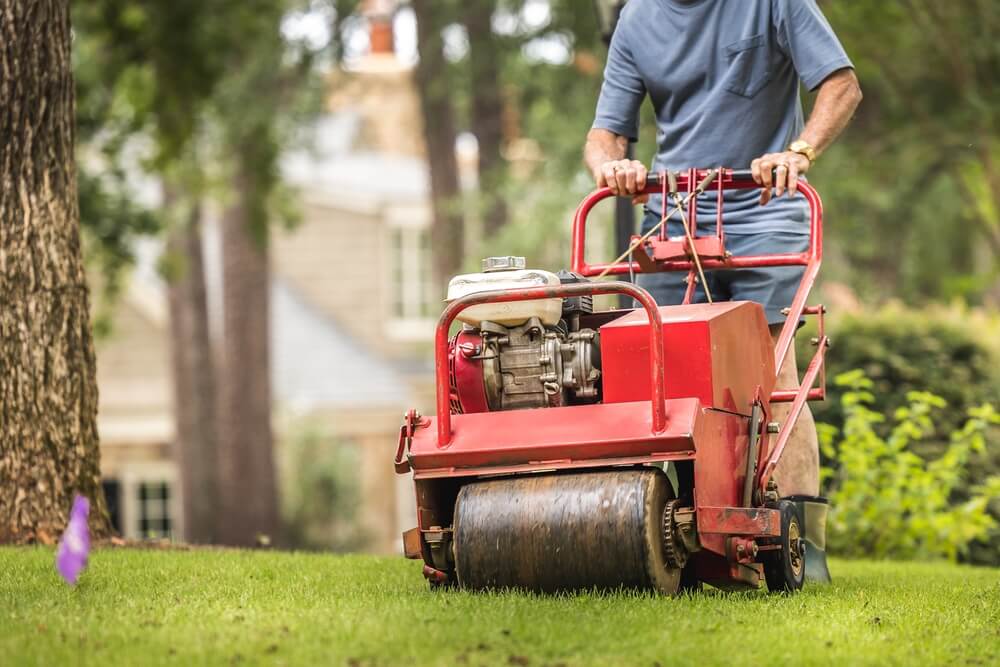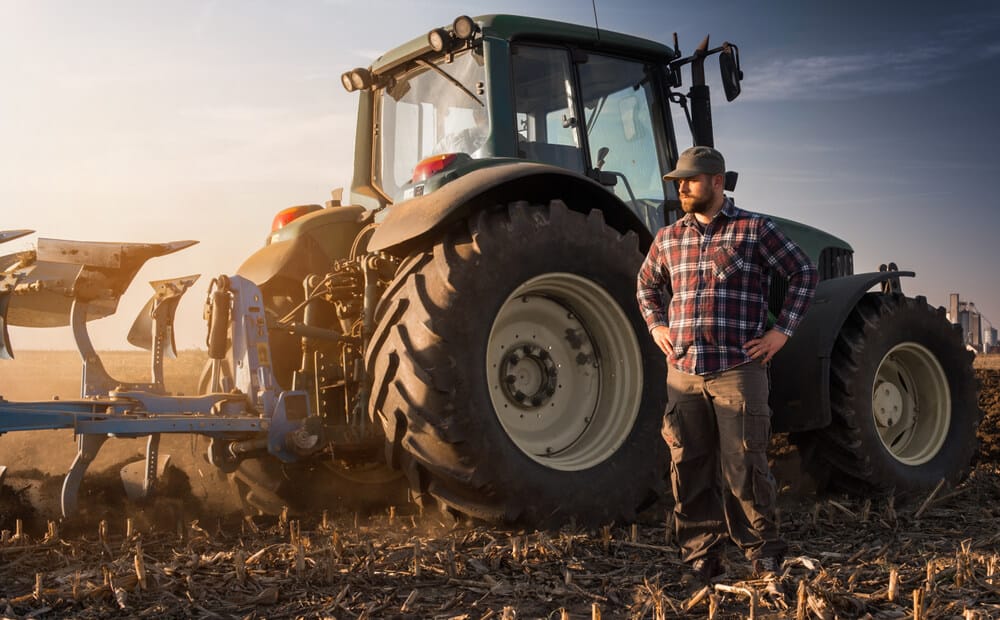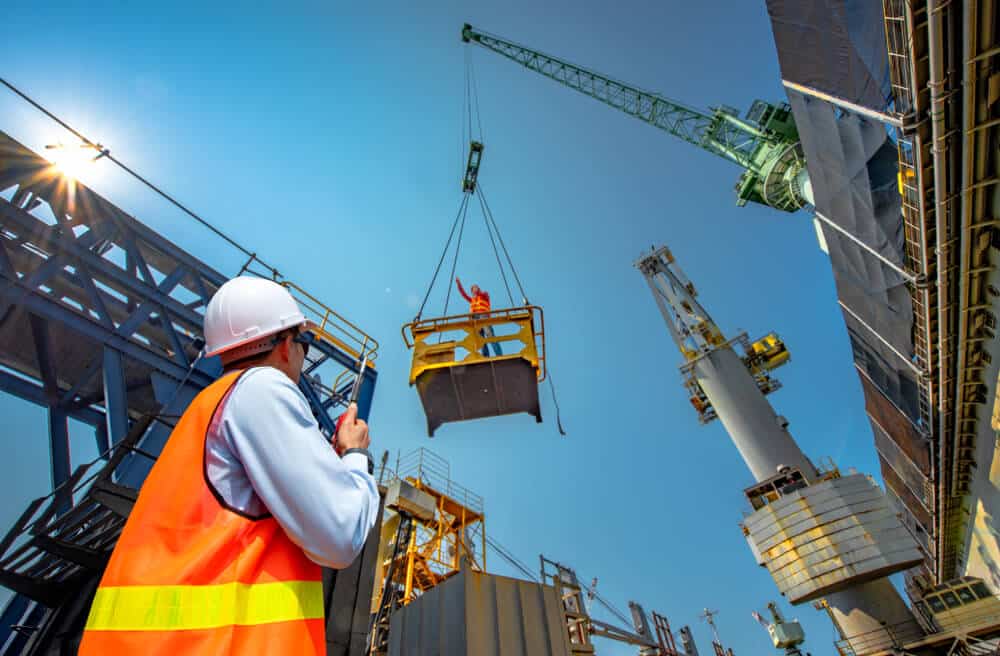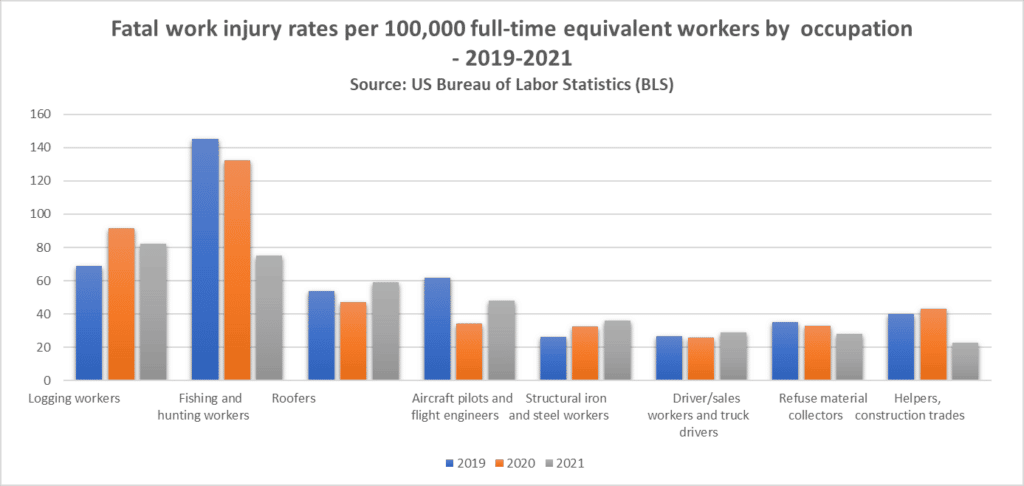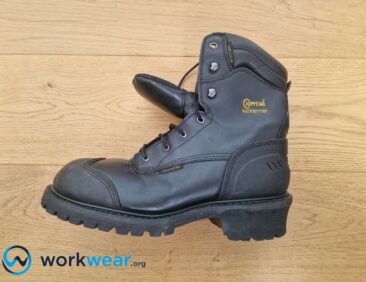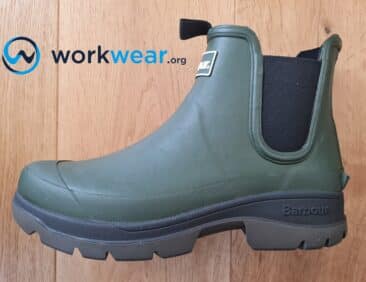Most Dangerous Jobs in the US based on the latest Statistics
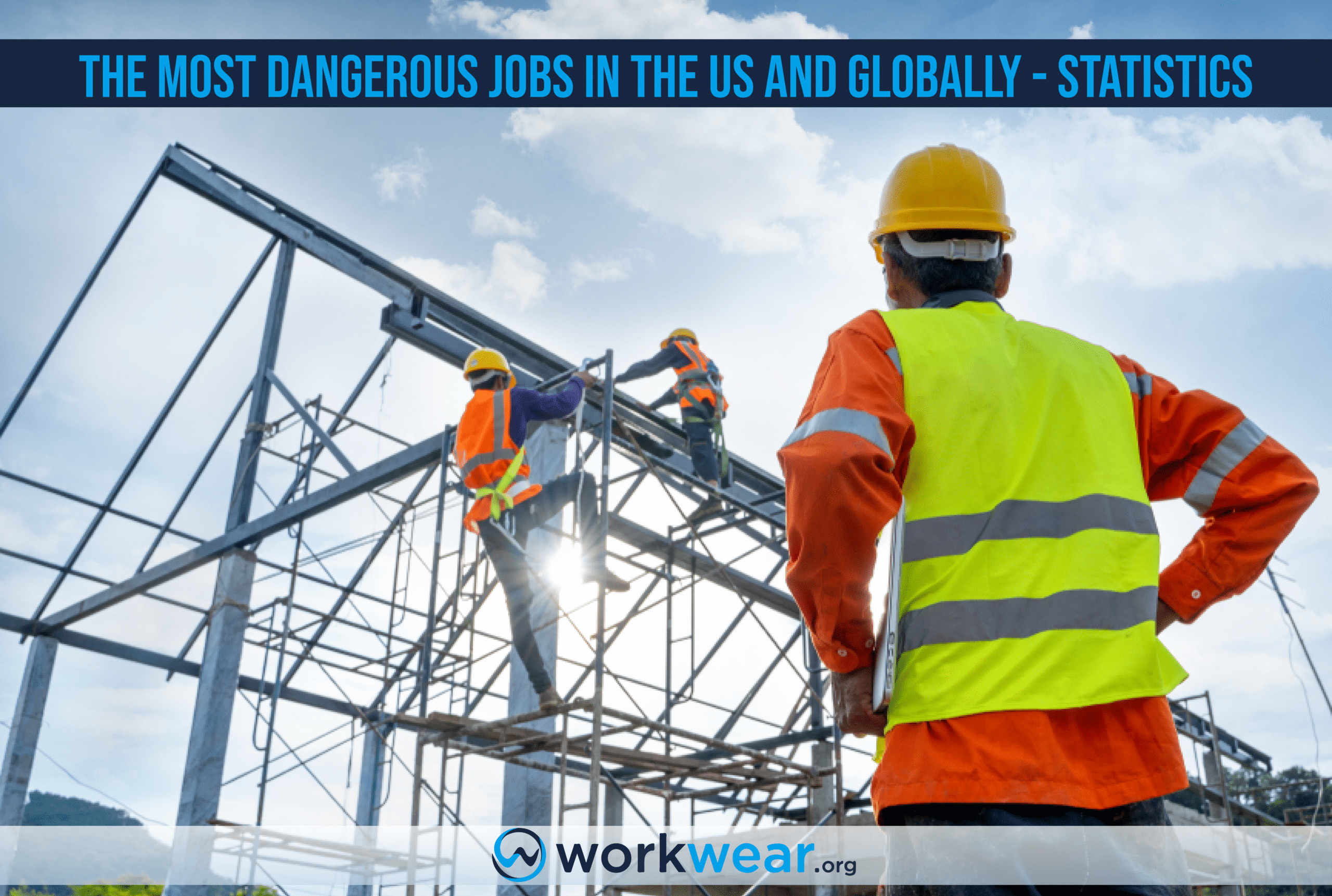
This is a complete list of up-to-date stats for the most dangerous jobs in the US and beyond for 2022.
In this article, get to know thoroughly researched and hand-picked stats covering:
- Deadliest Jobs in America 2022
- Most Dangerous Jobs in the World 2022
- Most Dangerous Industries to Work
Deadliest Jobs in America
While some jobs require working at a desk and filing paperwork, some people put their lives at risk to do the most dangerous tasks. Number 1 on our list is stats for the deadliest jobs in America.
Here is the list of the jobs in America ranked as the most dangerous based on the Census of Fatal Occupational Injuries from the US Bureau of Labor Statistics (BLS). The Census is based on the rate of injuries per 100,000 workers that lead to death. Among them, logging workers, fishing and hunting workers, and roofers have the highest rate of fatal occupational injuries.
1. Logging Workers
Fatal injury rate per 100,000 workers: 82.2
Average Salary per year: $46,330
Personal Protective Equipment (PPE) used: Hard hats, protection for eye and face, logging boots, and cut-resistant gloves.
Logging is considered one of the deadliest jobs in America. It involves working with heavy machinery and equipment, such as chainsaws and logging trucks, which can be dangerous if not operated properly. As a result, loggers have one of the highest rates of fatal injuries among all occupations.
2. Fishing & Hunting Workers
Fatal injury rate per 100,000 workers: 75.2
Average Salary: $45,760
Personal Protective Equipment (PPE) used: Protective gloves, eye goggles, nose masks, plastic sleeves.
Fishing and hunting are considered dangerous professions due to the hazards and risks associated with the work. Commercial fishers are particularly at risk, with the second highest rates of fatal injuries due to transportation incidents. These incidents can be caused by unpredictable weather and sea conditions, as well as the use of heavy equipment.
3. Roofers
Fatal injury rate per 100,000 workers: 59.0
Total Deaths (2019): 111
Average Salary: $38,139
Personal Protective Equipment (PPE) used: Hard hats, safety glasses, ear plugs, ear muffs, respirators, gloves, steel-toed boots, long sleeves, long pants, and safety vests.
Roofers install, repair, and replace roofs on homes and buildings. Their job requires them to climb on top of buildings using ladders or other equipment. Unfortunately, this also makes them vulnerable to fatal accidents, with falls from roofs or ladders being the most common cause of fatal work-related injuries among roofers.
4. Aircraft Pilots & Flight Engineers
Fatal injury rate per 100,000 workers: 48.1
Average Salary: $198,190
Personal Protective Equipment (PPE) used: Body protection, face protection, hand protection, and protective footwear.
Aircraft pilots operate and navigate airplanes, helicopters, and other aircraft types. Aircraft piloting is still considered dangerous despite the high level of training and experience required for this profession. The nature of flying, including the risks of human error, technical malfunctions, and weather conditions, makes flying a risky profession.
5. Structural Iron and Steel Workers
Fatal injury rate per 100,000 workers: 36.1
Average Salary: $36,610 – $76,920
Personal Protective Equipment (PPE) used: Welding gloves, cutting glasses, welding goggles, welding clothing, and face protection.
Ironworkers are in charge of putting iron and steel on structures like bridges, buildings, and roads. They usually have to ascend high places, unload the materials, and communicate with crane operators. As a result, they are at a high risk of fatal accidents caused by falls, slips, and trips.
6. Driver/Sales Workers and Truck Drivers
Fatal injury rate per 100,000 workers: 28.8
Average Salary: $36,660
Personal Protective Equipment (PPE) used: High visibility clothing, safety boots, hard hat, etc.
The occupation of truck drivers and delivery workers has the highest number of fatal injuries per year. Although the work these individuals do is crucial for the smooth functioning of supply chain operations, the hazards of working on the road are frequently acknowledged. As a result, studies on the impact of truck driver fatigue are becoming increasingly common among labor experts and academics.
7. Refuse and Recyclable Material Collectors
Fatal injury rate per 100,000 workers: 27.9
Average Salary: $29,114
Personal Protective Equipment (PPE) used: Safety glasses, face masks, cleaning cloths, wipes, etc.
The individuals who collect our waste during the early hours of the day engage in more dangerous work than most would think. Like truck drivers and other employees who work with large vehicles, trash collectors are at a higher risk of accidents related to transportation.
8. Underground Mining Machine Operators
Fatal injury rate per 100,000 workers: 26.7
Average Salary: $41,480-$62,890
Personal Protective Equipment (PPE) used: Boots, gloves, helmets with cap lamps, and protective padding.
Mining machine operators are responsible for using equipment to extract rock, coal, metals, or other hard materials from a mine and load them onto conveyors transporting the materials out of the mine. The most common cause of fatal accidents in this occupation is contact with objects and equipment.
9. Construction Trade Helpers
Fatal injury rate per 100,000 workers: 22.9
Average Salary: $37,610
Personal Protective Equipment (PPE) used: Hard hats, safety glasses, safety gloves, and boots, etc.
Construction helpers are individuals who provide assistance to trade workers during construction. Construction trade helpers may include building equipment contractors, building finishing contractors, and foundation and exterior contractors. The most frequent cause of fatal accidents among these workers is falls, slips, and trips on construction sites.
10. Electrical Power-Line Installers and Repairers
Fatal injury rate per 100,000 workers: 22.0
Average Salary:
Personal Protective Equipment (PPE) used: A self-contained breathing apparatus, a safety belt and line, and insulated gloves.
A profession that requires working at great heights could be considered one of the most hazardous jobs in America. This is the only profession on this list where the relatively high rate of fatal injuries is attributed to exposure to harmful substances, such as high-powered electric fields.
11. First-line Supervisors of Mechanics, Installers, and Repairers
Fatal injury rate per 100,000 workers: 19.4
Average Salary: $79,590
Personal Protective Equipment (PPE) used: Gloves, face mask, etc
Supervising mechanics and repairers is a risky profession. Even though these managers are higher in the organizational hierarchy and are paid better than the people they oversee, they still expose themselves to hazards at work. Notably, the most common cause of death for these workers is violence and injuries caused by other people or animals.
12. Ground Maintenance Workers
Fatal injury rate per 100,000 workers: 19.1
Average Salary: $37,441 – $49,229.
Personal Protective Equipment (PPE) used: Safety footwear, overalls and outerwear, safety gloves, reinforced trousers, and eye protection.
Ground maintenance workers have some of the lowest wages, but despite their low pay, they are five times more likely to suffer fatal injuries than the average worker. Groundskeepers and workers in similar roles often work with heavy industrial machinery and are in charge of large land areas.
13. First-Line Supervisors of Landscaping, Lawn Service, and Groundskeeping Workers
Fatal injury rate per 100,000 workers: 18.3
Average Salary: $53,270
Personal Protective Equipment (PPE) used: Safety shoes, gloves, and hearing protection.
Landscaping supervisors are in charge of organizing and overseeing the work of landscapers, lawn care workers, and groundskeepers. They are responsible for managing landscaping projects, ensuring compliance with work standards, inspecting work, and teaching workers the appropriate techniques for performing landscaping tasks. The most frequent cause of death for those working in this field falls, which can happen when performing tasks such as tree trimming from high places.
14. Farmers, Ranchers, and Other Agricultural Managers
Fatal injury rate per 100,000 workers: 17.5
Average Salary: $73,060
Personal Protective Equipment (PPE) used: Gloves, hard hats, full body suits, safety boots, respirators, fall arrest devices, etc.
Farmers are responsible for growing crops and raising animals for food production. They handle planting, harvesting, feeding and caring for livestock, as well as buying supplies and equipment for the farm and selling the products on the open market. This profession’s most common fatal accident is transportation incidents, particularly tractor crashes.
15. First-line Supervisors of Construction Trades and Extraction Workers
Fatal injury rate per 100,000 workers: 17.1
Average Salary: $75,060
Personal Protective Equipment (PPE) used: Hard hats, safety glasses, safety gloves and boots, etc.
Supervisors in the construction and extraction field may earn more than the laborers they manage; however, data suggest that these supervisors are at a greater risk of a fatal injury compared to their team members.
Important Facts about Dangerous Occupations
Now that you have gone through the list of the most dangerous jobs and industries in the US and beyond let’s discuss some random stats about these occupations and industries.
In 2020, there were 4,764 fatal workplace injuries in the United States, representing a 10.7% decrease from the previous year. The most common cause of fatalities was transportation incidents (37.3%). Among all occupations, those in fishing and hunting had the highest rates of workplace fatalities, followed by loggers and roofers.
The financial impact of workplace injuries and deaths is significant, with costs estimated at $163.9 billion in 2020. These costs include workers’ compensation, administrative fees, loss of wages and productivity, medical expenses, and damage to company property.
Here is the list of stats about dangerous occupations and industries gathered from the US Bureau of Labor Statistics.
- The annual rate of 3.6 fatal occupational injuries in 2021 is the highest since 2016.
- In 2021, transportation incidents continued to be the most common cause of fatal occupational injuries, with 1,982 reported cases, an 11.5% increase from the previous year. This category accounted for 38.2% of all work-related deaths during the same period.
- In 2021, falls, slips, and trips in construction and extraction jobs resulted in 370 fatalities, a 7.2% increase from the 345 deaths reported in 2020. Despite this increase, the number of fatalities in this event is still lower than in 2019, when there were 408 deaths in this occupation.
- Transportation incidents caused about one-third (33.4%), the highest count since 2016. In 2021, there was a 20.9% increase in fatalities among workers in installation, repair, and maintenance jobs, with a total of 475 deaths. Almost one-third of these deaths (152) were among vehicle and mobile equipment mechanics, repairers, and installers.
- In 2021, there was a significant increase of 16.3% in the number of deaths among driver/sales workers and truck drivers, rising from 887 deaths in 2020 to 1,032 deaths. This was the main reason behind the increase in fatalities among workers in transportation and material moving jobs, which reached a record high in 202.
- In 2021, there was a significant increase of 31.9% in fatalities among protective service occupations, such as firefighters, transit and railroad police, and law enforcement officers, rising from 229 deaths in 2020 to 302 deaths in 2021. Nearly half (45.4%) of these deaths were caused by suicides (21) and homicides (116).
- Fishing and hunting workers’ fatal injury rate decreased from 132.1 per 100,000 FTEs in 2020 to 75.2 in 2021.
- In 2021, construction and extraction occupations had the second-highest number of occupational deaths (951), despite a 2.6% decrease in fatalities from the previous year. Additionally, the fatality rate for this occupation also decreased from 13.5 deaths per 100,000 FTE workers in 2020 to 12.3 in 2021.
So this was all from our stats for the most dangerous occupations in the US and beyond. The purpose of these stats is not to scare you or prevent you from working in these industries. Rather, we want to make you aware of these facts so that you follow appropriate safety measures and save yourself from such incidents.
Regardless of your occupation and industry, you must always ensure following all the safety precautions your profession demands.
678+
Products Reviewed
24+ Years
Combined Experience
500+ Hrs
Field Testing
